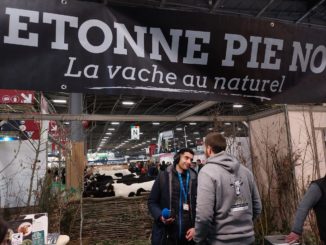
In the interests of transparency, ARC2020 is making available the European Commission’s draft regulation on NGTs – New Genomic Techniques. Also made available is the Impact Assessment which accompanies it.
Download the draft NGT regulation – Draft NGT proposal via ARC2020
Download the Impact Assessment of NGT Regulation via ARC2020
NEW – NGT annexes via ARC2020
NEW – Scrutiny Board’s 2ndd and 1st opinions DG SANTE NGT Via ARC2020
Total equivalence?
A long-awaited draft regulation by the EU Commission’s DG Sante to deregulate the approval, risk assessment and labelling of a whole range of new Genetically Modified Organisms (GMOs) has been leaked by ARC2020.
This draft has now entered into the so-called interservice consultation within the directorates general of the Commission and is due to be adopted by the College of the Commission on July 5th. In the interest of transparency and equal access to information ARC decided to make the documents publicly available. They may be subject to changes over the next weeks.
Prior to an in-depth analysis of the draft, here are some key elements of the concept in a nutshell.
New genomic techniques (NGT) are introduced as an umbrella term for certain genetic engineering technologies aiming to alter the DNA more precisely than “old” methods by directing the changes to predefined loci of the genome. The most prominent and popular of these technologies is CRISPR-Cas.
‘NGT plant’ means a genetically modified plant obtained by targeted mutagenesis, cisgenesis, intragenesis, or a combination thereof, on the condition that the NGT plant does not contain any genetic material originating from outside the breeders’ gene pool that temporarily may have been inserted during the development of the NGT plant.
The last half sentence refers to the fact that until now CRISPR-Cas and other constructs are introduced into the plant cells by means of old-fashioned genetic engineering such as agrobacterium tumefaciens. The concept, based upon four new definitions, is introduced by this regulation and therefor to European legislation for the first time.
None of these terms have been clearly defined so far nor is there a bulk of experience or scientific evidence that these types of GMOs have a proven record of reduced risk, or potential ecological or health harzards involved.
- ‘targeted mutagenesis’ means mutagenesis techniques resulting in modification(s) of the DNA sequence at precise locations in the genome of an organism;
- ‘cisgenesis’ means techniques of genetic modification resulting in the insertion, in the genome of an organism, of an exact copy of genetic material already present in the breeders’ gene pool;
- ‘intragenesis’ means techniques of genetic modification resulting in the insertion, in the genome of an organism, of a re-arranged copy of genetic material composed of two or more DNA sequences already present in the breeders’ gene pool;
- ‘breeders’ gene pool’ means the total genetic information available in one species and other taxonomic species with which it can be cross-bred, including by using advanced techniques such as embryo rescue, induced polyploidy and bridge crosses;

Category 1: Equivalent to conventional plants
Within this broad spectre of GMOs “NGTs Category 1” are deemed to be equivalent to conventionally bred plants and will no longer require a prior case by case risk assessment. A notification by the producers themselves to national competent authorities would be enough. It may include the demand to treat information submitted as confidential. No public label of the product as GMO will be required. Only the seed shall bear a label “new genomic technique category 1” and a public register will list all plants accepted as NGT1. No unique identifier of the GMO nor any other method of tracing the trait and its possible outcrossing will be required.
The proposed criteria to establish the equivalence of NGTs to conventional plants and their deregulation, allow for up to 20 different genetic modifications per plant of small insertions (up to 20 nucleotides), any number of deletions or inversions of DNA and any introduction of DNA sequences from within the so-called breeders gene pool. As a single exemption, herbicide tolerance of the GMO would disqualify it from category 1.
Any other NGTs, which entail even bigger insertions of DNA, would be subject to a “risk assessment light” requiring a more detailed analysis. A special feature as regards labelling of these GMOs is the opportunity to add any promotional language regarding their properties.
Measures to prevent the contamination of non-GMO cultivation and processing are left to the individual member states. Their right to opt out of approvals for cultivation, as foreseen in the present GMO regulation, is withdrawn. However, it upholds the ban to use any GMOs, including NGT 1, in organic farming.
The draft also proposes to delegate to the Commission the power of changing the crucial definitions in the Annexes of the regulation and to adopt implementing acts regarding the required notification information and risk assessments without the Parliament and the Council.
More on GMOs
GMO Deregulation Delayed – Where Are We At, Where Might We Be Going?





9 Trackbacks / Pingbacks
Comments are closed.